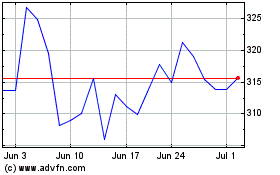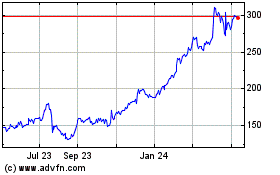By Steven Rosenbush
Architect and acoustician John Storyk, known for designing
recording and performance spaces around the world, was frustrated
by the limits of the software at his firm's disposal. So last year,
he and his research and development director decided to build their
own.
They wanted a tool that would help them optimize musical
recording and performance spaces for low-frequency sounds, such as
those formed by a bass guitar. Those sounds create large standing
waves, known as eigentones, that need to be evenly distributed.
"The less evenly distributed they are, the worse the room sounds,"
Mr. Storyk says. The dimensions of a room, the composition of its
surfaces and the use of noise-damping equipment are all variables
to consider.
They searched for software that could perform low-frequency
analysis on rooms of varied shapes and sizes and quickly assess
potential solutions.
Mr. Storyk and Peter D'Antonio, his firm's R&D director,
tried to find a software company that would develop such a tool and
bring it to market, but found no takers. "Peter and I just looked
at each other one day and said, 'Well, we can do it,'" said Mr.
Storyk.
After more than a year of work, they are claiming success, and
say their software is being used in their work with a number of
clients, including Spotify Technology SA. The software does its job
better and faster than people can, and makes it possible to quickly
try out more ideas in the design process, they said.
"It is a great example, for me, of exactly what computers are
supposed to be doing," Mr. Storyk said.
"We have to make various inputs, but once those inputs are made,
it is basically AI, a nonautonomous form of AI," Dr. D'Antonio
said.
Mr. Storyk has been wrestling with the complexities of
low-frequency sound ever since he designed Electric Lady Studios
for Jimi Hendrix more than 50 years ago.
"Low-frequency analysis has become the most critical phase in
our acoustic design process," said Mr. Storyk, who has worked on
high-profile projects around the world, including Jazz at Lincoln
Center and Jay-Z's Roc the Mic studio complex in New York, and the
Zhejiang Conservatory of Music in Hangzhou, China. Early in his
career, he studied with architect and inventor Buckminster
Fuller.
He founded Walters-Storyk Design Group, or WSDG, in 1987 with
wife Beth Walters. The firm, with a staff of about 75, operates
internationally and is based in Highland, N.Y., along the Hudson
River north of New York City.
Low-frequency sounds are ubiquitous in music. "Basically all
hip-hop music, and for that matter, all rock and roll and every
symphony written from Beethoven on" are infused with low-frequency
sound, Mr. Storyk said. The waves from these sounds can be larger
than the room itself, creating auditory imbalances if left
unchecked, according to Mr. Storyk, himself a musician who plays
piano and saxophone, and loves the blues and opera.
The idea was to automate the process of figuring out how to best
manage low-frequency sounds in the design of recording studios,
performance spaces and other environments.
He approached Dr. D'Antonio to see if better tools could be
found. Dr. D'Antonio, a physicist, spent 29 years at the U.S. Naval
Research Laboratory in Washington. He also maintained a career in
music and recording, founding RPG Acoustical Systems, which makes
sound absorption and diffusion products.
In 2019, they began developing the Non-Cuboid Iterative Room
Optimization tool, or NIRO.
Inside the Acousticave
WSDG spent more than $100,000 hiring programmers for the
project. It also built an experimental listening room called the
Acousticave where NIRO's ability to predict acoustics in the real
world could be put to the test.
An unused storage room was converted into a small reverberation
chamber with concrete walls. The surfaces were reinforced with
plywood to make them extremely rigid. The acoustics of the room
were poor but distinctive. Next, highly tuned damping modules were
developed to alter the acoustics of the room. The idea was to see
whether NIRO could accurately predict how the acoustics of the room
would respond to the damping modules.
Dr. D'Antonio constructed NIRO using a genetic algorithm, which
is based on the idea of natural selection. It searches for optimal
answers to a problem by trying a large number of possibilities. The
process begins with "parents" and proceeds through numerous
"offspring" until an optimal solution is found. The idea is to
optimize the physical structure of the room, as well as the use of
materials and specially constructed acoustical damping units.
Step by step, NIRO evolved by early 2020 to the point where its
predictions coincided with the actual acoustics of the room.
"The NIRO prediction and the actual measurement of the
Acousticave...were almost identical," Mr. Storyk said. "It was
quite amazing."
Out of the Lab
NIRO is now part of a separate company called REDI Acoustics
LLC. Dr. D'Antonio serves as research director of WSDG and REDI
Acoustics.
WSDG has started to employ NIRO in work for its clients, using
the tool in almost 20 projects, including new studios for Sony
Corp. of America; rapper, singer and songwriter J. Cole; Mike
Gordon, bass player and singer with the band Phish; and Hollywood
composer Carter Burwell, WSDG said.
WSDG is using NIRO to help design Spotify's new recording
studios in the Arts District in Los Angeles. WSDG is the lead
architect and acoustician for all acoustic rooms, such as control
rooms, studios, isolation booths and podcasting studios.
NIRO has improved the design process, according to Chris
D'Angelo, head of production and studio facilities at Spotify.
"Normally, I would say, 'Here, this is what I want to do,' and he
would design around that, then have a variation on a theme, and do
a little tweaking," Mr. D'Angelo said. The use of NIRO "allowed me
to explore many, many more different layers or ways of solving
studio problems in the same amount of time."
The technology has transformed the design process, making it
easier to quickly test ideas, according to Mr. Storyk.
"We were doing the analysis once, and then sometimes maybe we
would take a second shot at it. And that's when we would run out of
time," Mr. Storyk said. "Now I can just go away for lunch and come
back and it's cranking, and we are doing other things."
Write to Steven Rosenbush at steven.rosenbush@wsj.com
(END) Dow Jones Newswires
August 03, 2020 08:44 ET (12:44 GMT)
Copyright (c) 2020 Dow Jones & Company, Inc.
Spotify Technology (NYSE:SPOT)
Historical Stock Chart
From Mar 2024 to Apr 2024

Spotify Technology (NYSE:SPOT)
Historical Stock Chart
From Apr 2023 to Apr 2024
